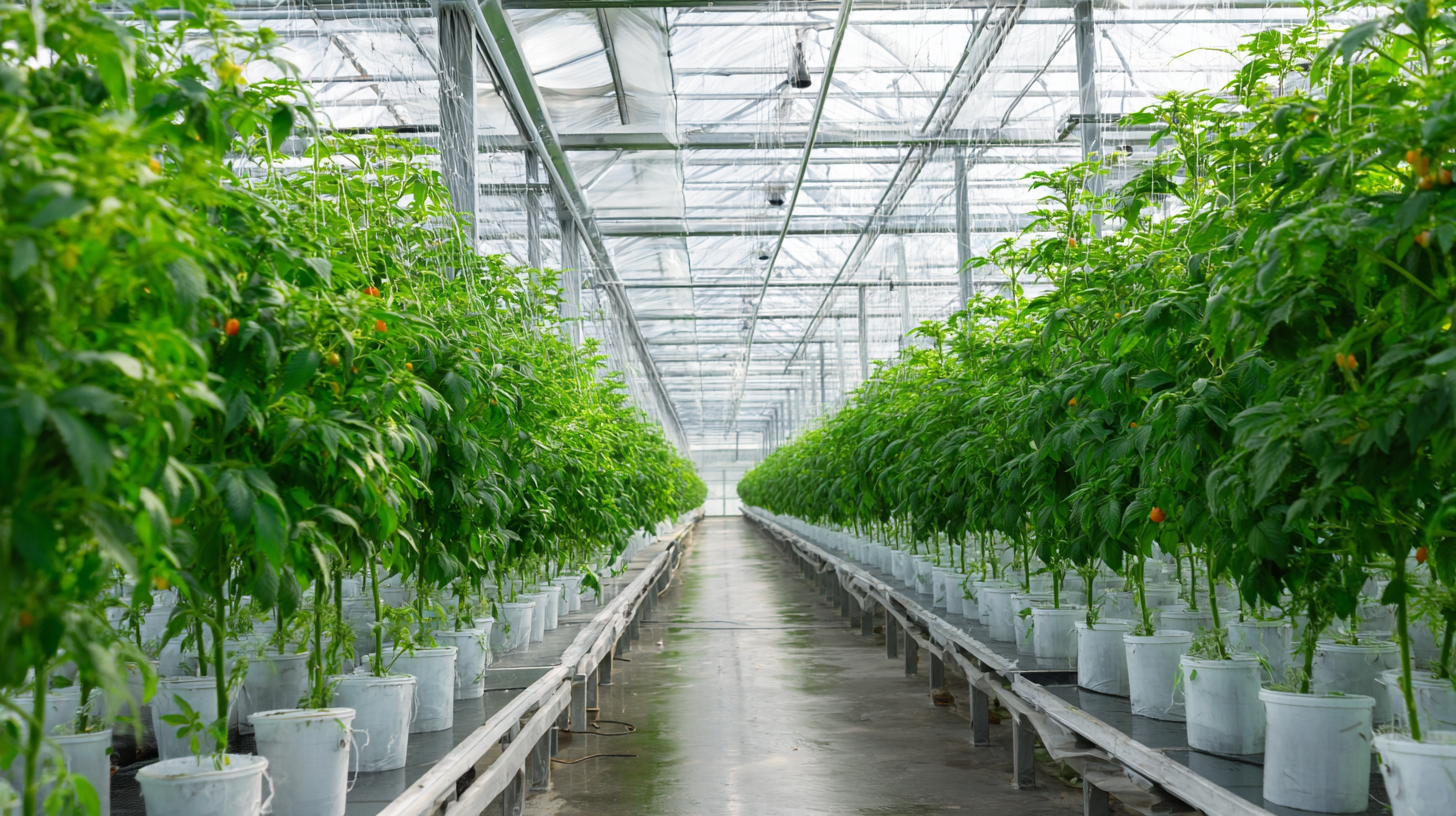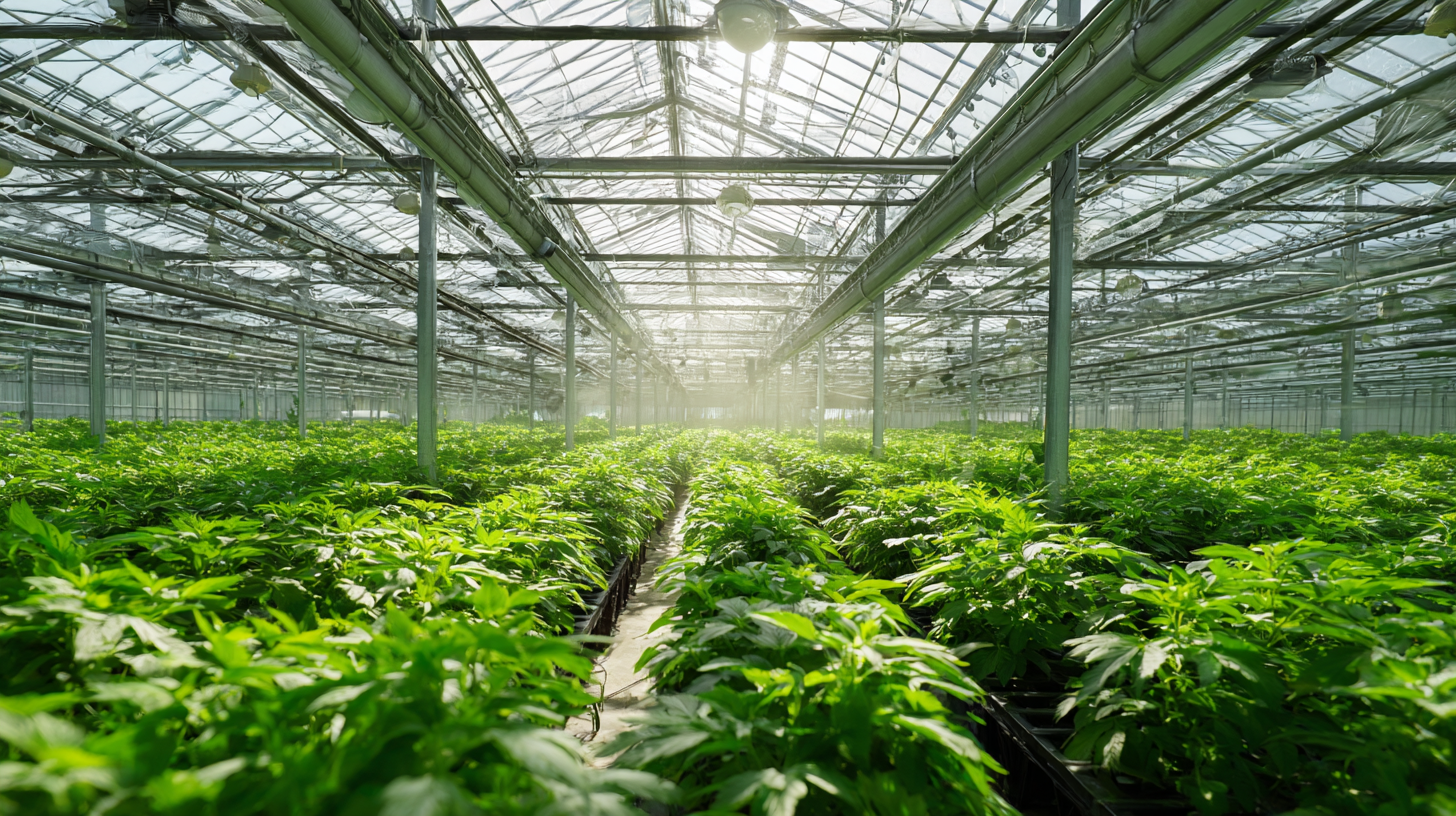
7 Reasons Why the Best Light Deprivation Greenhouse Will Transform Your Cultivation Business
In the ever-evolving world of agriculture, the integration of technology with traditional practices has become paramount, especially for those looking to elevate their cultivation business. One remarkable innovation in this realm is the Light Deprivation Greenhouse, designed to maximize plant growth while minimizing environmental impact. This advanced farming solution enables growers to control light exposure, allowing for year-round cultivation regardless of external weather conditions.
As the demand for high-quality crops continues to rise, adopting a Light Deprivation Greenhouse not only enhances productivity but also ensures a competitive edge in the market. In this blog, we will explore seven compelling reasons why investing in the best Light Deprivation Greenhouse can transform your cultivation business, focusing on how this cutting-edge technology, exemplified by "世界领先制造,中国优质出品", can propel your operations to new heights.

The Benefits of Light Deprivation Techniques in Greenhouse Cultivation
Light deprivation techniques have revolutionized greenhouse cultivation, offering growers unprecedented control over their environment. By manipulating light cycles, cultivators can optimize plant growth, enhance yields, and even influence the flowering time of crops. This method is particularly beneficial for those looking to produce high-quality products year-round, as it allows for multiple harvests in a single season.
When implementing light deprivation, consider investing in blackout tarps or specialized screens to effectively block out natural light during the desired hours. Additionally, maintaining optimal temperature and humidity levels is crucial for plant health. Regular monitoring and adjusting will prevent stress on the plants and promote robust growth.
Moreover, integrating automated systems for controlling light and environmental factors can significantly reduce labor costs and improve efficiency. As technology advances, these systems become more accessible and affordable, making them an excellent addition for any cultivation business aiming to thrive in a competitive market. Embracing light deprivation not only enhances production capabilities but also helps growers stay ahead of industry trends, ultimately leading to greater profit margins.
7 Reasons Why the Best Light Deprivation Greenhouse Will Transform Your Cultivation Business
| Benefit | Description | Impact on Yield | Cost Efficiency |
|---|---|---|---|
| Extended Growing Seasons | Allows for multiple harvests per year by managing light exposure. | Increases annual yield by up to 30%. | Reduces costs related to seasonal downtime. |
| Pest and Disease Control | Provides better climate control, reducing pest outbreaks. | Improves plant health, boosting yield quality. | Less spending on pesticides and treatments. |
| Improved Crop Quality | Allows growers to manipulate light for optimal photosynthesis. | Higher quality produce leads to premium pricing. | Increased profit margins due to superior product quality. |
| Energy Efficiency | Minimizes energy consumption by utilizing natural light. | Can reduce energy costs by up to 40%. | Lower overhead costs translate into better profitability. |
| Customizable Growth Environment | Easily adjust light cycles to fit different crops' needs. | Increases flexibility in crop selection and rotation. | Maximizes land use and product diversity. |
| Reduced Labor Needs | Less manual intervention needed for light management. | Streamlines operations and boosts efficiency. | Cuts labor costs and free up workforce for other tasks. |
| Sustainability | Supports environmentally friendly practices and reduces carbon footprint. | Aligns with consumer demand for sustainable products. | Potential for premium pricing on eco-friendly products. |
How Light Deprivation Greenhouses Improve Crop Yields by 30% or More
 Light deprivation greenhouses have revolutionized cultivation practices, leading to remarkable improvements in crop yields. Industry data indicates that farmers utilizing these specialized greenhouses report an increase in productivity by 30% or more compared to traditional growing methods. This significant boost primarily arises from the ability to control light exposure, allowing growers to mimic the ideal conditions for various crops, ultimately enhancing growth cycles and quality.
Light deprivation greenhouses have revolutionized cultivation practices, leading to remarkable improvements in crop yields. Industry data indicates that farmers utilizing these specialized greenhouses report an increase in productivity by 30% or more compared to traditional growing methods. This significant boost primarily arises from the ability to control light exposure, allowing growers to mimic the ideal conditions for various crops, ultimately enhancing growth cycles and quality.
Research from the Greenhouse Grower magazine reveals that crops such as cannabis and tomatoes thrive in light deprivation systems. These greenhouses can efficiently block out natural sunlight during certain periods, thereby extending the photoperiod as needed. For instance, the ability to induce flowering in cannabis plants through controlled light exposure has been shown to yield higher cannabinoid concentrations, contributing to both quantity and quality of the harvest. Consequently, many growers are adapting to these innovative structures, embracing technology that not only maximizes output but also leads to sustainable agricultural practices, escalating the profitability of their businesses.
Cost Efficiency: Savings from Energy Use and Labor in Light Deprivation Systems
Light deprivation systems are revolutionizing greenhouse cultivation, particularly when it comes to cost efficiency. By effectively managing light exposure, these systems allow growers to maximize their crop yields while minimizing energy consumption. The reduced need for artificial lighting during certain growth stages not only lowers electricity costs but also enhances the overall sustainability of the operation. This translates to significant savings over time, making light deprivation an economically viable choice for cultivators aiming to improve their bottom line.
Moreover, labor costs can be substantially decreased with the implementation of light deprivation techniques. Automated systems streamline processes such as shading and covering, reducing the need for manual labor. This efficiency enables growers to allocate their workforce more strategically, focusing on critical tasks that enhance overall productivity. Ultimately, the economic benefits of integrating light deprivation greenhouses are clear, allowing businesses to thrive while maintaining high-quality crop production. With advancements in technology, the potential for cost savings in energy use and labor is greater than ever, setting the stage for a more profitable cultivation future.
Cost Efficiency: Energy Use and Labor Savings in Light Deprivation Systems
Regulations and Market Trends Favoring Light Deprivation Practices in Cannabis Cultivation
As cannabis cultivation evolves, light deprivation practices are gaining traction amidst changing regulations and market trends. According to a recent report from the Brightfield Group, the U.S. legal cannabis market is projected to reach $41.5 billion by 2025, creating a pressing need for growers to maximize their crop yield while meeting compliance standards. Light deprivation technology allows cultivators to manipulate light cycles, enabling them to produce high-quality cannabis year-round, regardless of natural light conditions.
Furthermore, regulations increasingly favor cultivation strategies that incorporate sustainability and efficiency, making light deprivation an attractive option. The National Cannabis Industry Association highlights that states with favorable regulations around light deprivation have seen a significant increase in licensed cultivators. By adopting this method, growers can scale effectively while adhering to compliance requirements, resulting in cost savings and higher profit margins. With demand for cannabis products surging, those who embrace innovative growing techniques will likely stand out in the competitive market landscape.
Innovative Technologies Enhancing Light Deprivation Greenhouse Performance in 2023
In 2023, the cultivation industry is experiencing a significant transformation, particularly in the realm of light deprivation greenhouses. Innovative technologies are enhancing the performance of these greenhouses, leading to higher yields and improved quality of crops. According to the latest industry report from Grand View Research, the global market for greenhouses is projected to reach $47.5 billion by 2027, largely driven by advancements in controlled environment agriculture. These technologies enable growers to optimize light exposure, control temperature, and maintain humidity levels, which are critical for maximizing plant growth.

One of the most exciting advancements is the integration of smart sensors and automation systems. These tools allow for real-time monitoring and adjustments based on environmental conditions, enhancing efficiency and productivity. A study by the American Society for Horticultural Science revealed that growers using automated light deprivation systems reported yield increases of up to 30% compared to traditional methods. Furthermore, the adoption of energy-efficient LED lighting not only reduces operational costs but also extends the growing season, allowing for more harvest cycles within a year. As the industry continues to innovate, embracing these technological advancements will be crucial for cultivators aiming to stay competitive in a rapidly evolving market.
